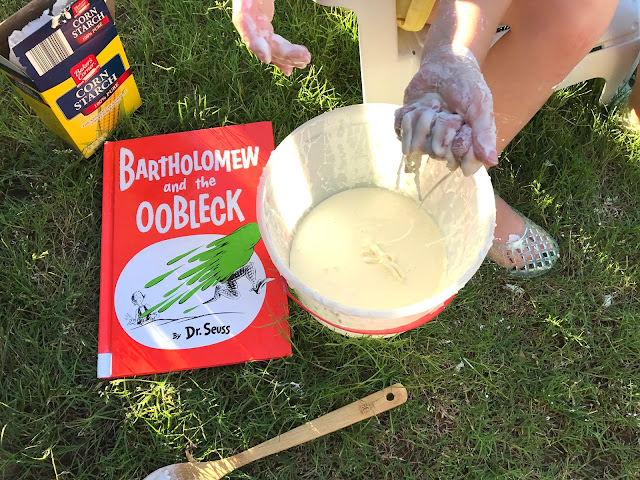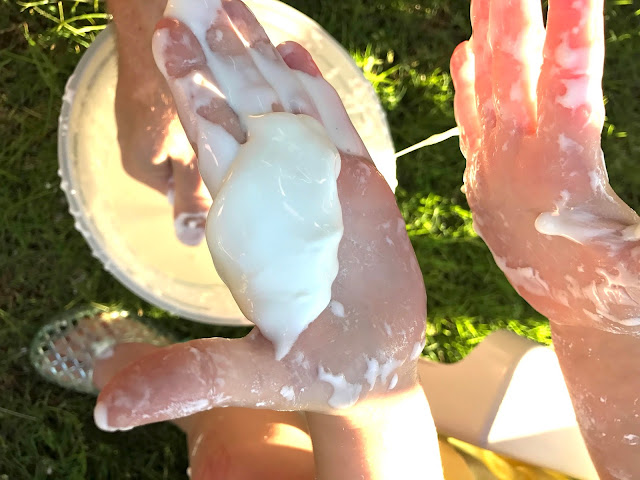We’ve been seeing lots of fun, messy, summer posts about oobleck and we just had to find out exactly what it is! We just had to! So we headed straight to our local library and checked out Dr. Seuss’ Caldecott Honor-winning picture book, Bartholomew and the Oobleck. And now we know exactly what oobleck is! It is the green slimy goop that fell from the sky in King Derwin’s kingdom of Didd.
You know what we just had to do next. We had to make some oobleck of our own! The Internet is full of recipes for it! You already have all the ingredients you need to whip up a batch of your own this very minute! Do not delay! You must, must, must, put your hands in it. Squeeze it! Roll it! If you dare!!!
The recipe we found simply called for 1 cup of water and 1 1/2 – 2 cups of cornstarch. Mix together until you get a slimy consistency. Food coloring can be added to take your oobleck experience to a more colorful level. We chose to leave ours in its natural state because we did not want to mess with stained hands.
After our oobleck experience we talked about what made it so weird (and fun). Our 4 year old concluded that it was weird because it was a liquid and a solid all at the same time. She was actually very interested in our discussion. We then had the next mini lesson:
1. Name things that are solids.
2. Name things that are liquids.
3. Can you make a solid into a liquid? How?
4. Can you make a liquid into a solid? How?
5. Can you make a liquid into anything else? How?
She liked the example of ice being a solid and then turning into a liquid. She knew that she needed to add heat. She was able to envision a popsicle melting into a liquid. We then filled a saucepan with ice and added heat to watch it turn to a liquid. We added more heat and watched the liquid turn into steam.
Thank you Dr. Seuss! Your oobleck was the perfect, fun, slimy way to introduce our daughter to 3 of the 5 states of matter and kick off our summer goal of adding more STEAM to our learning!
“Steam is an educational approach to learning that uses Science, Technology, Engineering, the Arts and Mathematics as access points for guiding student inquiry, dialogue, and critical thinking. The end results are students who take thoughtful risks, engage in experiential learning, persist in problem-solving, embrace collaboration, and work through the creative process. These are the innovators, educators, leaders and learners of the 21st century!”


1 thought on “Bartholomew and the Oobleck”